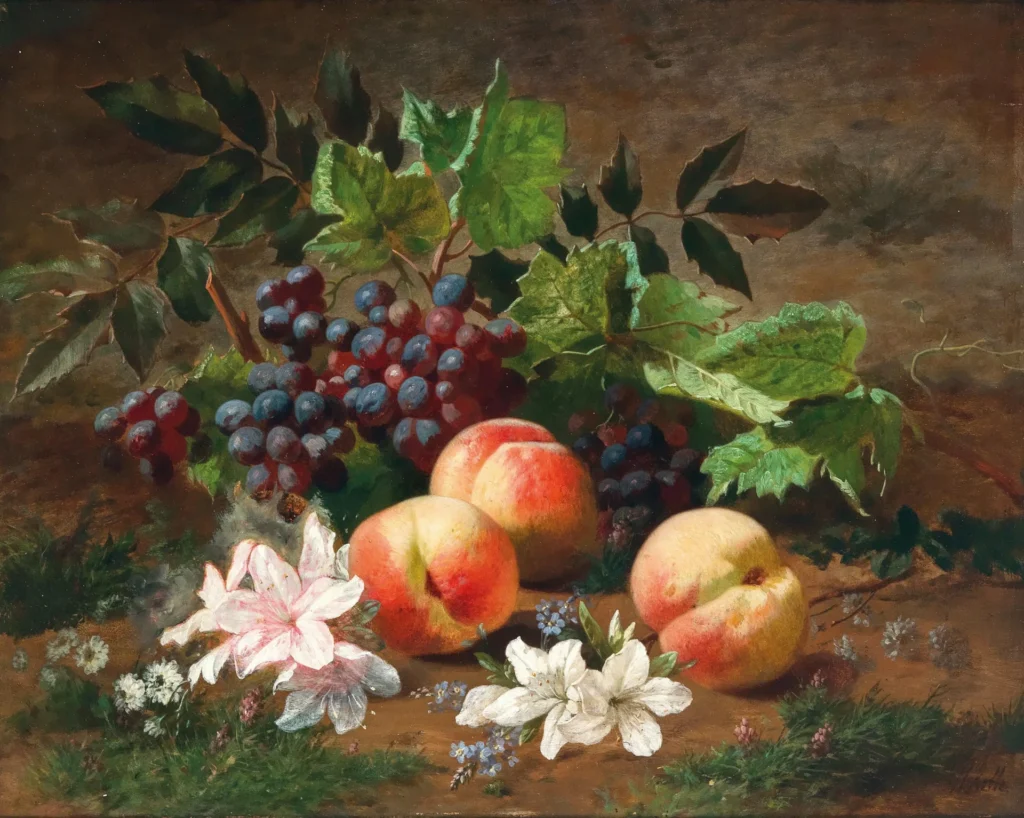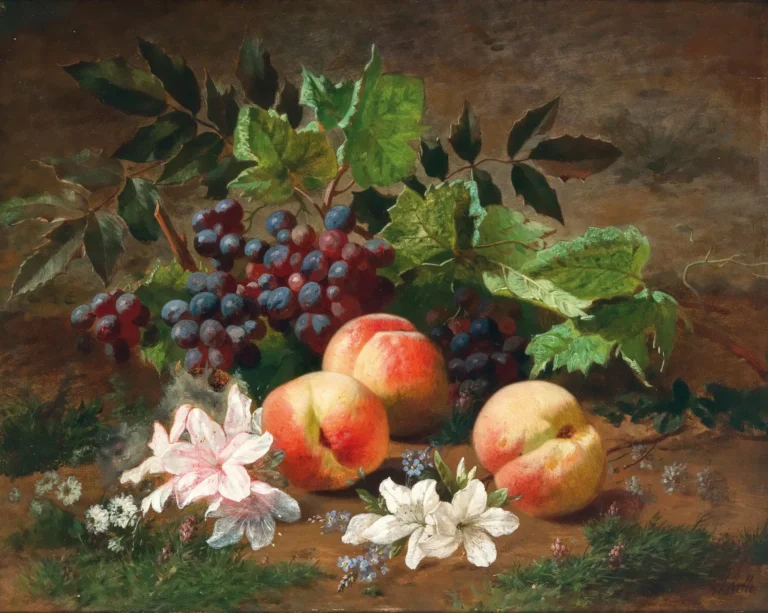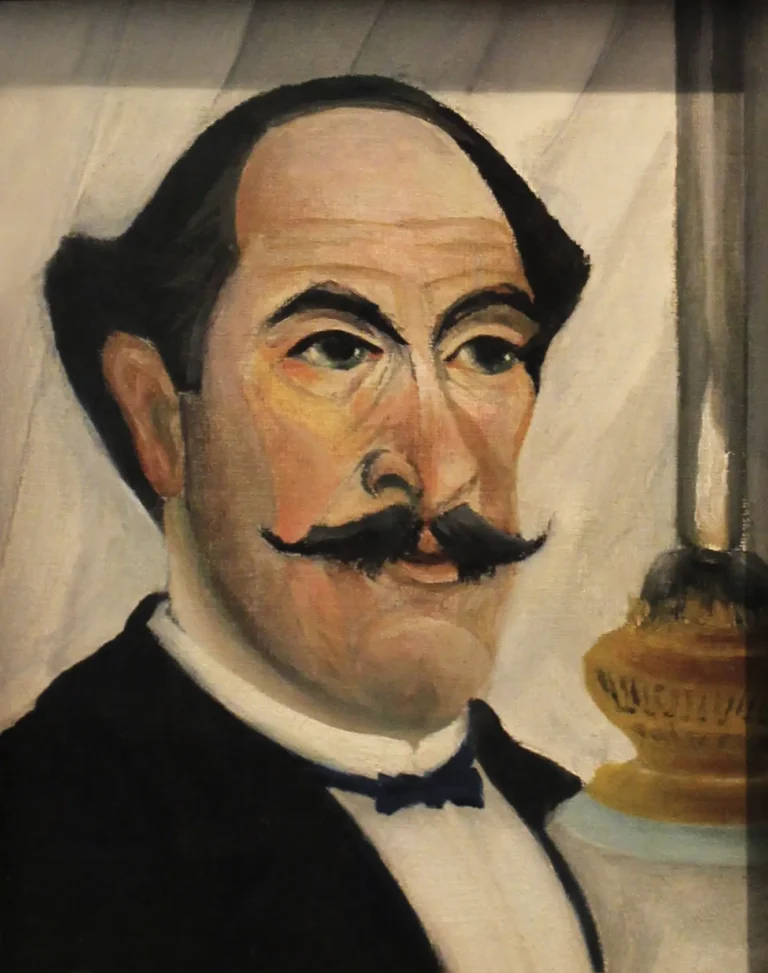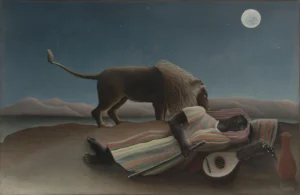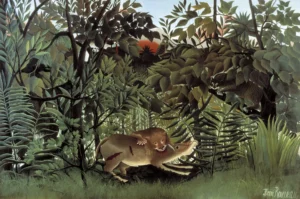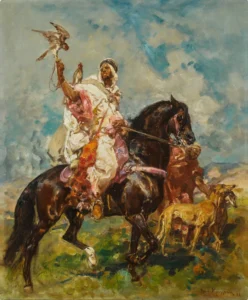A Forest Still Life with Peach and Grapes
Henri Rousseau's A Forest Still Life with Peach and Grapes is a stunning oil painting that harmoniously combines elements of nature with traditional still life. Executed in the Naive style, this work manifests Rousseau's penchant for vibrant colors and expressive forms, capturing the essence of fruit within a lush forest environment. It stands as a testament to his innovative approach to art, where the depth of nature intertwines with everyday objects, inviting viewers to appreciate the beauty in simplicity.
Late 19th Century
About the Artwork
Rousseau, often viewed as a primitive or naive artist, created this work during the late 19th century, a time when traditional art norms were being challenged by movements such as Impressionism. Despite being a self-taught artist and holding a consistent job as a customs officer, Rousseau's passion for painting led him to disregard conventional techniques in favor of a more colorful and imaginative representation of nature. This piece exemplifies his unique vision, allowing audiences to enter a world where the vibrant colors of peaches and grapes coexist with a serene forest backdrop, echoing both the tranquility and richness of the natural world. Rousseau's artistic journey is a story of breaking boundaries and changing perceptions of art, as he sought to express his reality in the most honest and heartfelt manner.
Did You Know
Before becoming a celebrated artist, Henri Rousseau worked as a customs officer, earning him the nickname ‘Le Douanier’. His background influenced both the themes and subjects of his artwork, often drawing inspiration from his surroundings.
Rousseau began painting seriously at the age of 40, a remarkable feat considering he had no formal training. His dedication and distinct style gained recognition and respect posthumously, solidifying his legacy as a pioneer of Naïve art.
Rousseau’s art is characterized by a child-like simplicity and vibrant color palettes which stand in contrast to the more complex, realistic styles of his contemporaries. This unique approach has established him as a pivotal figure in the transition towards modern art.




